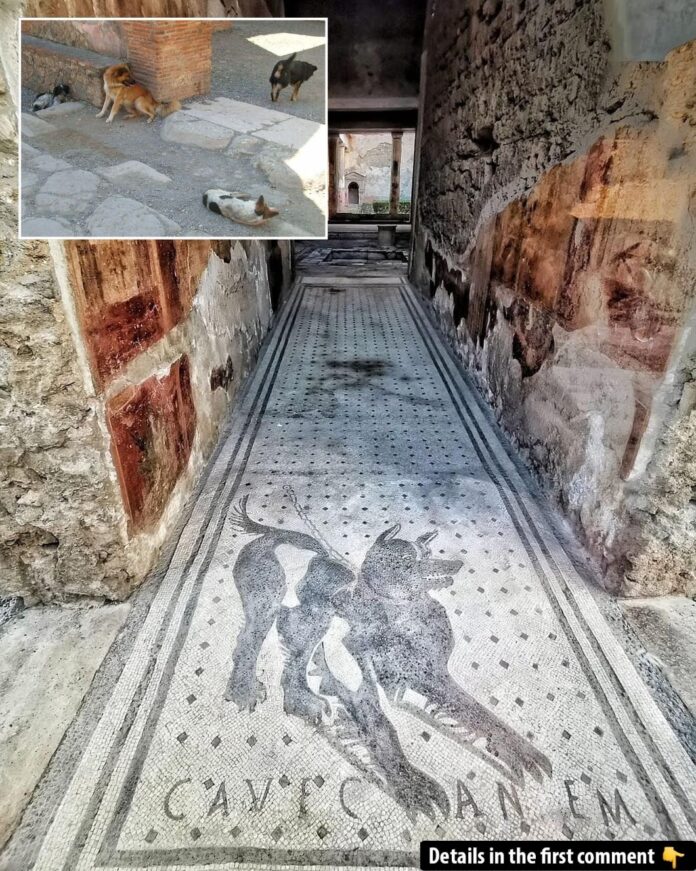In the shadow of Mount Vesuvius, Pompeii’s ruins whisper tales of an ancient world frozen in time. Among its most iconic remnants is the Cave Canem mosaic, a striking symbol of Roman life that warned visitors to “Beware of the Dog.” Today, this enduring artwork inspires a modern story—one of compassion and connection—as Pompeii’s stray dogs find new homes through an innovative global adoption program, bridging past and present in the most heartwarming way.
The House of the Tragic Poet: A Glimpse into Roman Life
The Cave Canem mosaic is located at the entrance of one of Pompeii’s most intriguing residences, the House of the Tragic Poet. This modestly sized yet exquisitely decorated domus provides a fascinating look into Roman domestic life and artistic expression. The house is celebrated for its vibrant frescoes and mosaics, which depict scenes from Greek mythology and everyday Roman culture. Despite its relatively small size, the intricate artwork and thoughtful layout suggest the owner was a cultured and affluent individual with a taste for refinement.
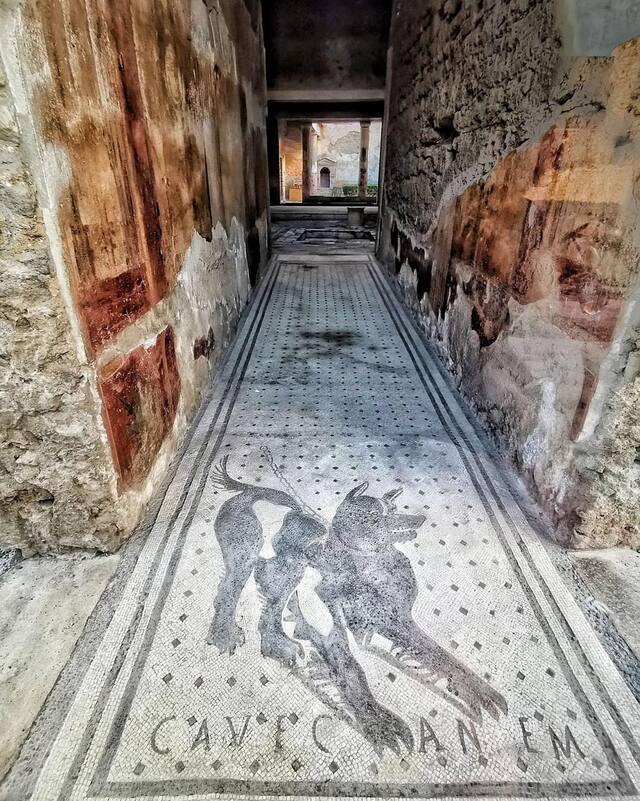
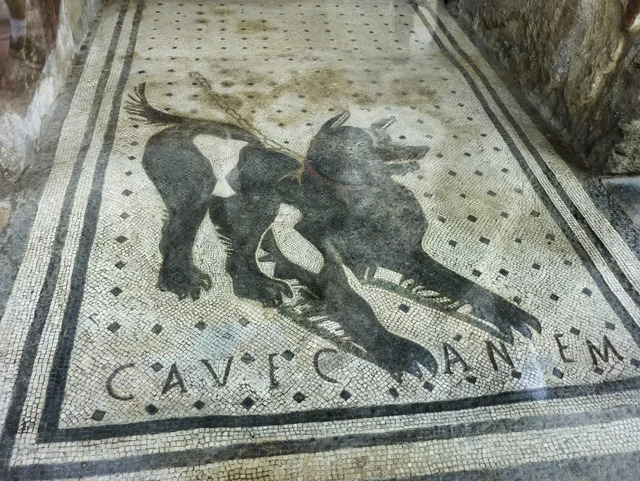
At the threshold, the Cave Canem mosaic greets visitors with an image of a dog chained and lunging forward. The inscription, meaning “Beware of the Dog,” was both a practical warning and a demonstration of the homeowner’s attention to security. Inside, rooms like the atrium and peristyle reflect the typical layout of Roman homes, while the frescoes reveal themes of heroism and tragedy, aligning with the poetic inclinations suggested by the house’s name.
The House of the Tragic Poet, like the Cave Canem mosaic, serves as a window into the complex lives of Pompeii’s residents—where art, mythology, and daily routine were seamlessly interwoven.
Step into the House of the Tragic Poet in Pompeii and explore the iconic Cave Canem mosaic – watch the video to learn more about this stunning piece of ancient art!
The Historical Significance of the Cave Canem Mosaic
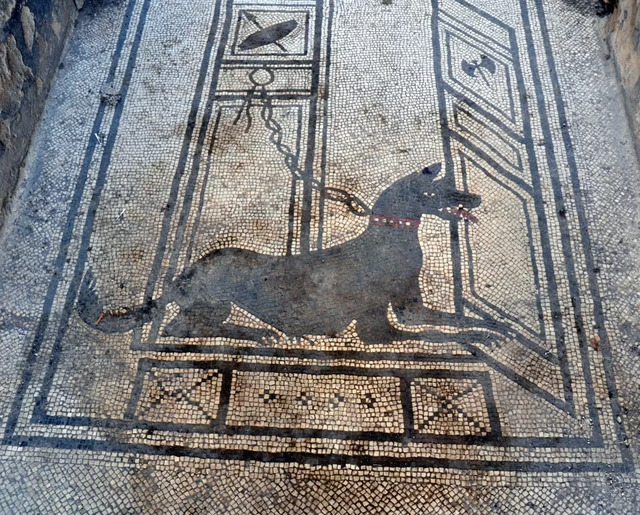
The Cave Canem mosaic stands as a testament to the artistry and practicalities of ancient Roman life. Found at the entrance of this distinguished residence, the mosaic served a dual purpose: to warn visitors of a guard dog and to showcase the homeowner’s status and cultural sophistication. Crafted with exceptional detail, the mosaic features a black dog, its chain taut, and the words “CAVE CANEM” (Latin for “Beware of the Dog”) beneath its feet.
Such mosaics were common in Roman times, symbolizing not just protection but the integration of dogs into domestic life. In Pompeii, dogs were both guardians and companions, a presence woven into the fabric of daily life. The Cave Canem mosaic, preserved by the volcanic ash, continues to represent the bond between humans and dogs in ancient Roman society.
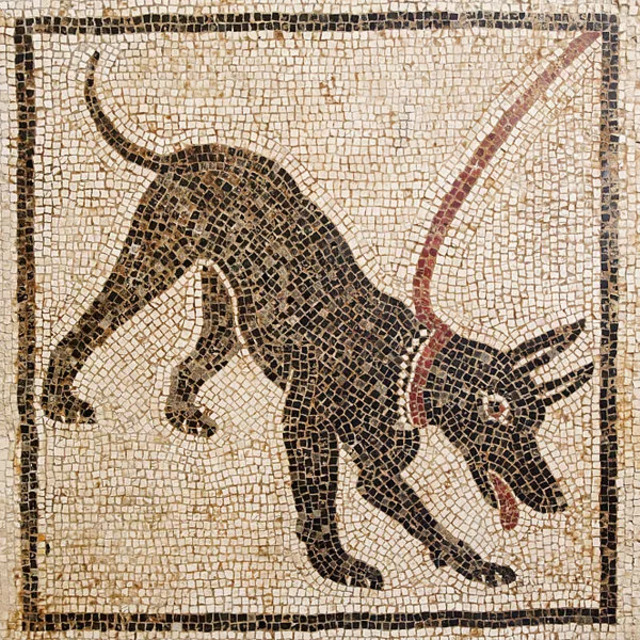
Dogs in Ancient Pompeii
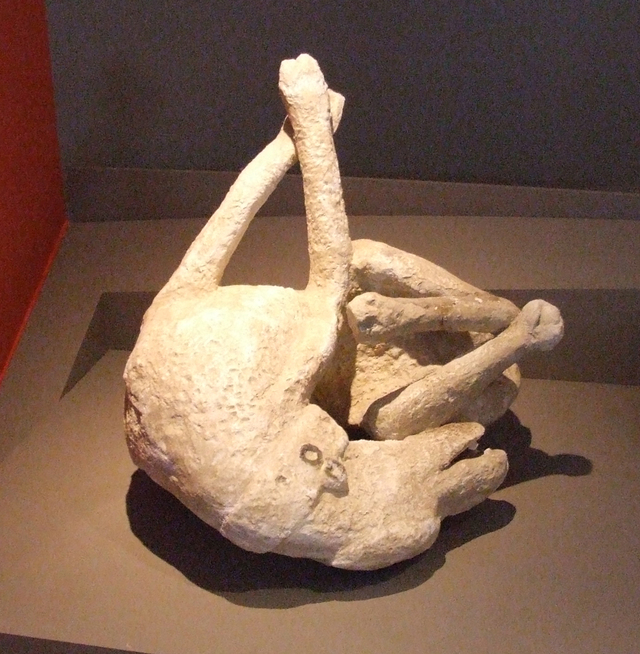
Beyond the iconic mosaic, archaeological evidence reveals the significant role dogs played in Pompeii. Plaster casts of animals, including dogs, preserved in their final moments under the ash, provide a haunting glimpse into their lives during the catastrophic eruption of Mount Vesuvius. These animals were often chained or found in domestic settings, highlighting their roles as guardians and companions.
Dogs were integral to Roman culture, not just for their utility but for their symbolism. They represented loyalty and protection, as reflected in Roman literature and art. In Pompeii, they were part of daily life, guarding homes, accompanying hunters, and even featuring in religious practices. This enduring bond between humans and dogs is reflected in the preservation of artifacts like the Cave Canem mosaic.
The Legacy of Pompeii’s Dogs Today
Fast forward to modern times, Pompeii’s dogs remain a prominent feature of the city. Stray dogs wander among the ruins, their presence a reminder of the city’s ancient canine inhabitants. However, their existence poses challenges. While they survive by scavenging from tourists, many suffer from health issues, and their foraging behavior impacts the preservation of Pompeii’s fragile ruins.
The stray dogs of Pompeii symbolize a living connection to the past but also present a conservation dilemma. Their presence in an area with ongoing archaeological work and fragile heritage structures highlights the need for humane solutions that respect both the animals and the preservation of history.
The Cave Canem Adoption Program
In response to these challenges, Pompeii’s authorities have introduced an innovative adoption program to care for the city’s stray dogs while promoting global awareness of their historical significance. This multi-stage initiative addresses the welfare of the animals and the conservation of the ruins.
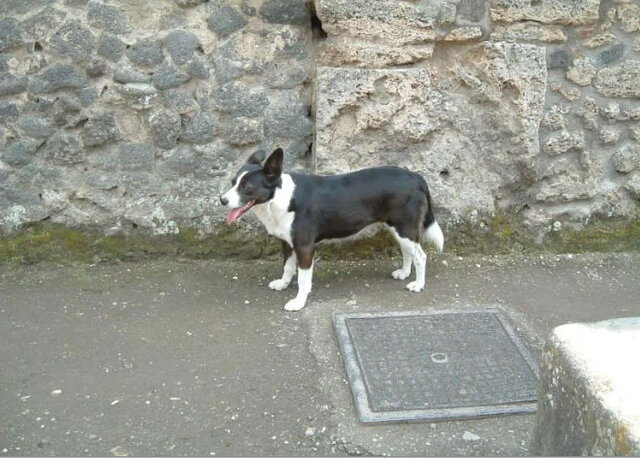
Identification and Health Care
Volunteers from leading animal welfare organizations, such as LAV and the National Animal Protection Authority, identify the stray dogs by microchipping and tagging them with collars and names. This ensures each dog’s traceability and prepares them for adoption. Veterinary teams treat illnesses and sterilize the animals to control the population.
Temporary Shelters
Dedicated shelters have been set up around Pompeii to provide food, medical care, and warm accommodations for the dogs. These facilities act as transition spaces before the animals are adopted.
Global Adoption
The program extends beyond local boundaries, aiming to find homes for the dogs worldwide. A dedicated website (www.canidipompei.com) allows potential adopters to view profiles of the dogs and begin the adoption process. This unique initiative invites people from all over the globe to connect with Pompeii’s historical narrative by welcoming a dog into their home.
Adopting History: A Global Appeal
The adoption program offers an extraordinary opportunity for dog lovers and history enthusiasts alike. Owning a stray dog from Pompeii is more than adopting a pet—it’s adopting a piece of living history. These dogs, descendants of ancient Roman companions, symbolize the enduring connection between humans and animals.
For international adopters, logistical arrangements may include traveling to Pompeii to meet their new companion. This process ensures that the dogs are matched with responsible and caring families. By adopting a Pompeii dog, individuals contribute to the preservation of the city’s archaeological heritage while giving these animals a chance at a better life.
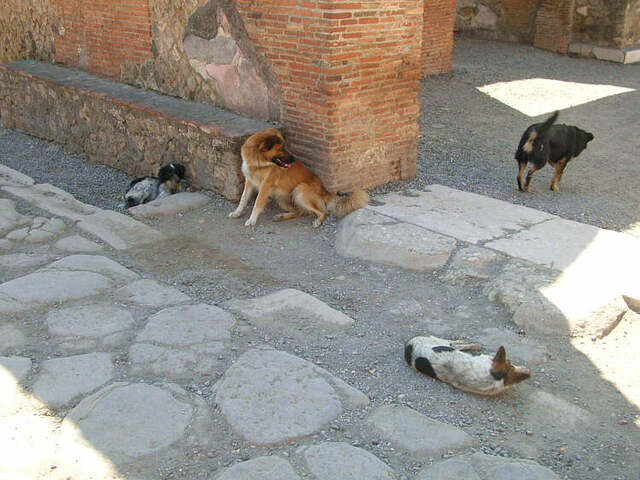
Preservation Through Compassion
The adoption program is a remarkable example of how conservation and compassion can coexist. By managing the stray dog population humanely, the program reduces the strain on Pompeii’s archaeological sites, allowing conservation efforts to focus on preserving its unique history. At the same time, it addresses the welfare of the animals, offering them a chance for a healthier, more stable life.
This initiative sets a precedent for other heritage sites facing similar challenges, showing that practical solutions can honor both historical preservation and animal welfare.
Video
Join archaeologists as they begin the biggest excavation in a generation in Pompeii – watch the BBC News video to uncover the latest groundbreaking discoveries from this ancient site!
Conclusion
The Cave Canem mosaic has long been a symbol of Pompeii’s history and culture. Today, its message finds renewed relevance through the adoption program, which bridges the gap between ancient traditions and modern solutions. By adopting a Pompeii dog, individuals can preserve a piece of history while making a compassionate difference in the lives of these animals.
Pompeii’s story continues to evolve, not just as a historical site but as a testament to humanity’s enduring bond with its past and its animals. Through this initiative, the city’s dogs find new homes, and the legacy of Pompeii lives on in a deeply personal and meaningful way.
